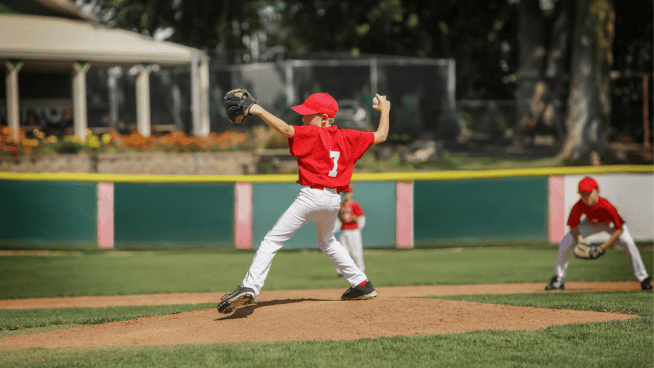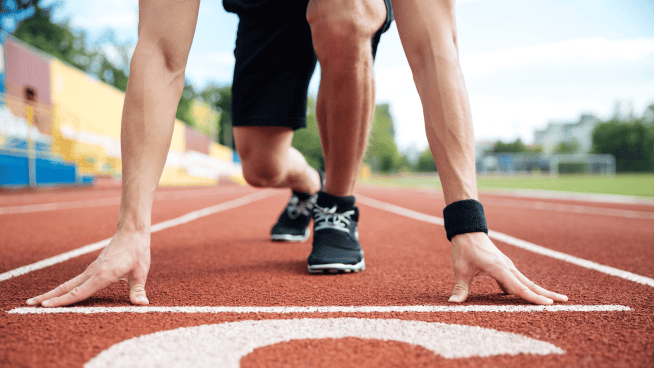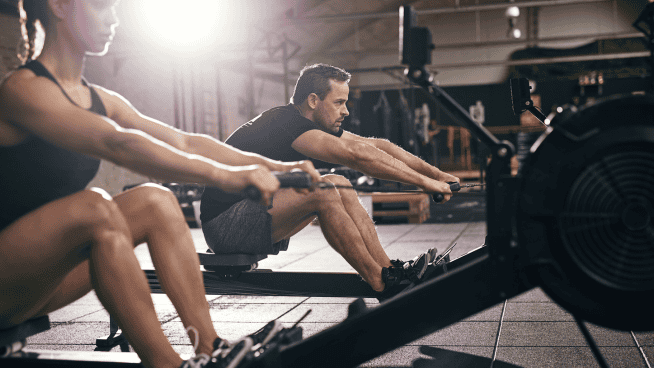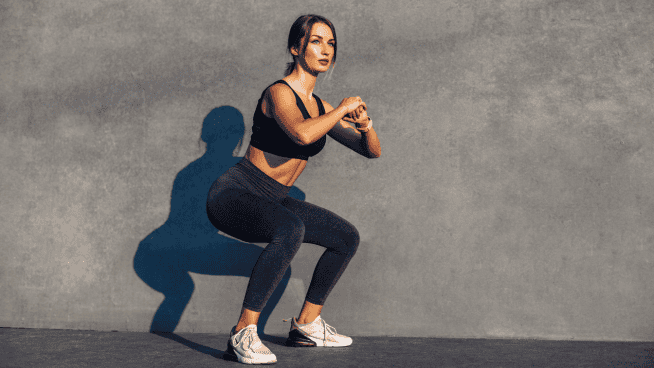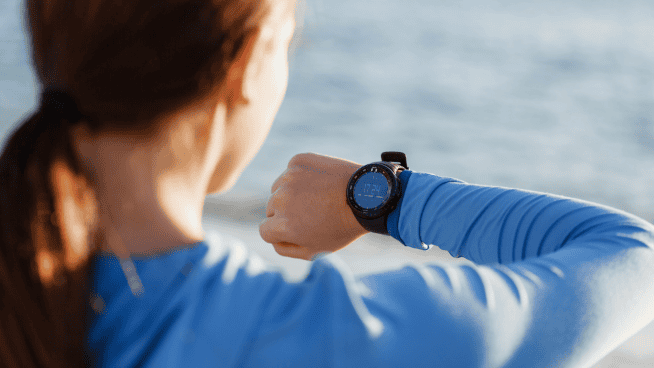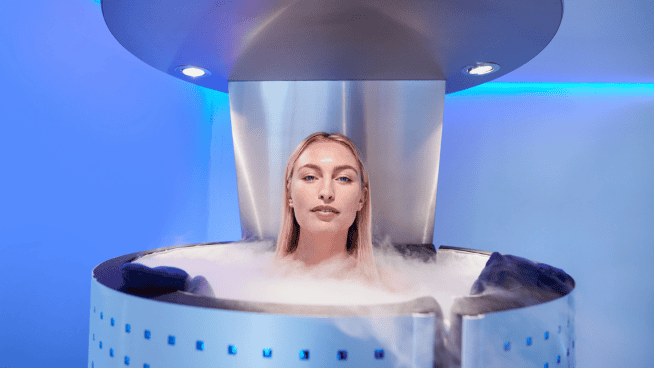NBA Chiropractors Reveal 5 Keys to Healthy Knees and Ankles
Three of the four most common injuries suffered by youth basketball players involve the knees and ankles, according to the University of Wisconsin School of Medicine and Public Health.
They are ankle sprains, tears in the ACL (anterior cruciate ligament), and Sever’s disease, which is inflammation in the heel bone’s growth plate.
What can you do to prevent these from happening to you, enabling you to stay on the court and continue to play a game you love?
To answer this question, we reached out to two chiropractors who currently treat NBA players, Dr. Mary Collings, DC and official chiropractor for the Dallas Mavericks, and Dr. Myles Starkman, DC, who has been treating the Miami Heat since 1995. Here’s what they had to say.
1. Wear Shoes Designed for Your Sport and Your Feet
When a young basketball player comes into Dr. Collings’ office, “I always look at their feet,” she says. Why?
One reason is because young players often choose their shoes based more on what’s in style rather than what gives them proper support. That’s why she recommends that players take the time to be fitted professionally, ensuring that they find a shoe that works best for them based on their foot’s structure and function.
In addition, it’s important that these shoes be replaced every six months (or until the player sizes out of them), says Dr. Collings. She suggests players write the date of purchase on the inset of the bottom of the shoe to serve as a reminder of when it’s time to get a new pair.
2. Consider Orthotics (Shoe Inserts)
“Most athletes have orthotics of some type because you have to have a stable foot,” says Dr. Starkman.
Orthotics are another name for shoe inserts, and while some are designed to provide more support for the foot or ankle, others were created to help correct any structural issues in the foot.
Does this mean you have to spend a lot of cash to buy custom shoe inserts?
Not at all, says Dr. Starkman. There are many over-the-counter brands that provide good arch support and heel cupping, giving your feet the necessary stability.
To help you select one, some stores have kiosks available that scan your feet and make a recommendation. Another option is to look up reviews on sites like Amazon to see what other people think of a particular brand or style of insert.
3. Never Neglect Your Warm-Up
Another piece of advice Dr. Collings shares with her rising basketball stars is related to performing a proper warm-up before games.
“Often the parents bring the athlete about five minutes before the event and expect them to just get out there and play,” she says.
However, this can put the player at higher risk of ankle and knee injuries because they’re not warmed up. What type of exercises offer the most benefit when performed before the event?
“With both of my professional teams, they have to participate in a pre-game workout that may consist of a 15- to 20-minute lifting series followed by a quick cardio shoot-around,” says Dr. Collings.
Some players also use this time to do some dynamic stretches (stretches that take muscles and joints through full range of motion) or to get taped up, ensuring that they’re ready for the upcoming game.
4. Strengthen Your Midsection
Both Dr. Collings and Dr. Starkman agree that strengthening your midsection can also help prevent injuries to your ankles and knees. How?
“Strengthening your core and glutes works by stabilizing your pelvis,” explains Dr. Starkman. In turn, this helps stabilize the rest of the lower body.
A strong core also means better balance, says Dr. Collings. In fact, she prefers that her players focus more on building core strength than they do on taping ankles.
Even top NBA players like Stephen Curry have benefited from a strong midsection. ESPN reported how this basketball legend overcame recurring ankle injuries by strengthening his hips and butt.
There are many ways to build a stronger core.
One option recommended by Dr. Starkman is an upper-body rolling pattern. It’s similar to how a baby rolls from its back to its front:
“It’s harder to do than you think,” says Dr. Starkman, adding that his team performs this core strengthening exercise all the time. The reason it works is because it helps players build the smaller muscles in the back, which is generally a group of muscles they don’t regularly work to develop.
5. Control Your Stress
Finally, if you want to help prevent knee and ankle injuries, control your stress.
“There’s so much stress for student-athletes,” says Dr. Starkman. Sometimes it is physical in nature, such as having a heavy period of training, competition or practice. Spending a lot of time looking down at your phone or hauling around a heavy backpack can also take a physical toll on your body.
However, mental stress makes an impact, as well.
“When we get into stress mode, the brain doesn’t differentiate between a bear and your parents yelling at you,” he says. “The stress response is the same.”
Ultimately, this can lead to brain fog, negatively impacting your ability to perform and potentially increasing your risk of injury.
Some of the most effective ways for players to better control their stress include engaging in stretching and deep breathing exercises, performing yoga, or even downloading an app designed to calm the brain down, says Dr. Starkman. “If you want to play well, you want your brain to be calm and level,” he says. “You can’t be in defense (mode) and heal at the same time.”
In addition to these five tips, staying away from clubs or teams that force you to play too much basketball is a big key to avoiding overuse injuries. Listen to your body and don’t be afraid to give your body a break from the repetitive actions of basketball. Your knees and ankles will thank you.
Photo Credit: Aaron Ontiveroz/Getty Images
READ MORE:
RECOMMENDED FOR YOU
MOST POPULAR
NBA Chiropractors Reveal 5 Keys to Healthy Knees and Ankles
Three of the four most common injuries suffered by youth basketball players involve the knees and ankles, according to the University of Wisconsin School of Medicine and Public Health.
They are ankle sprains, tears in the ACL (anterior cruciate ligament), and Sever’s disease, which is inflammation in the heel bone’s growth plate.
What can you do to prevent these from happening to you, enabling you to stay on the court and continue to play a game you love?
To answer this question, we reached out to two chiropractors who currently treat NBA players, Dr. Mary Collings, DC and official chiropractor for the Dallas Mavericks, and Dr. Myles Starkman, DC, who has been treating the Miami Heat since 1995. Here’s what they had to say.
1. Wear Shoes Designed for Your Sport and Your Feet
When a young basketball player comes into Dr. Collings’ office, “I always look at their feet,” she says. Why?
One reason is because young players often choose their shoes based more on what’s in style rather than what gives them proper support. That’s why she recommends that players take the time to be fitted professionally, ensuring that they find a shoe that works best for them based on their foot’s structure and function.
In addition, it’s important that these shoes be replaced every six months (or until the player sizes out of them), says Dr. Collings. She suggests players write the date of purchase on the inset of the bottom of the shoe to serve as a reminder of when it’s time to get a new pair.
2. Consider Orthotics (Shoe Inserts)
“Most athletes have orthotics of some type because you have to have a stable foot,” says Dr. Starkman.
Orthotics are another name for shoe inserts, and while some are designed to provide more support for the foot or ankle, others were created to help correct any structural issues in the foot.
Does this mean you have to spend a lot of cash to buy custom shoe inserts?
Not at all, says Dr. Starkman. There are many over-the-counter brands that provide good arch support and heel cupping, giving your feet the necessary stability.
To help you select one, some stores have kiosks available that scan your feet and make a recommendation. Another option is to look up reviews on sites like Amazon to see what other people think of a particular brand or style of insert.
3. Never Neglect Your Warm-Up
Another piece of advice Dr. Collings shares with her rising basketball stars is related to performing a proper warm-up before games.
“Often the parents bring the athlete about five minutes before the event and expect them to just get out there and play,” she says.
However, this can put the player at higher risk of ankle and knee injuries because they’re not warmed up. What type of exercises offer the most benefit when performed before the event?
“With both of my professional teams, they have to participate in a pre-game workout that may consist of a 15- to 20-minute lifting series followed by a quick cardio shoot-around,” says Dr. Collings.
Some players also use this time to do some dynamic stretches (stretches that take muscles and joints through full range of motion) or to get taped up, ensuring that they’re ready for the upcoming game.
4. Strengthen Your Midsection
Both Dr. Collings and Dr. Starkman agree that strengthening your midsection can also help prevent injuries to your ankles and knees. How?
“Strengthening your core and glutes works by stabilizing your pelvis,” explains Dr. Starkman. In turn, this helps stabilize the rest of the lower body.
A strong core also means better balance, says Dr. Collings. In fact, she prefers that her players focus more on building core strength than they do on taping ankles.
Even top NBA players like Stephen Curry have benefited from a strong midsection. ESPN reported how this basketball legend overcame recurring ankle injuries by strengthening his hips and butt.
There are many ways to build a stronger core.
One option recommended by Dr. Starkman is an upper-body rolling pattern. It’s similar to how a baby rolls from its back to its front:
“It’s harder to do than you think,” says Dr. Starkman, adding that his team performs this core strengthening exercise all the time. The reason it works is because it helps players build the smaller muscles in the back, which is generally a group of muscles they don’t regularly work to develop.
5. Control Your Stress
Finally, if you want to help prevent knee and ankle injuries, control your stress.
“There’s so much stress for student-athletes,” says Dr. Starkman. Sometimes it is physical in nature, such as having a heavy period of training, competition or practice. Spending a lot of time looking down at your phone or hauling around a heavy backpack can also take a physical toll on your body.
However, mental stress makes an impact, as well.
“When we get into stress mode, the brain doesn’t differentiate between a bear and your parents yelling at you,” he says. “The stress response is the same.”
Ultimately, this can lead to brain fog, negatively impacting your ability to perform and potentially increasing your risk of injury.
Some of the most effective ways for players to better control their stress include engaging in stretching and deep breathing exercises, performing yoga, or even downloading an app designed to calm the brain down, says Dr. Starkman. “If you want to play well, you want your brain to be calm and level,” he says. “You can’t be in defense (mode) and heal at the same time.”
In addition to these five tips, staying away from clubs or teams that force you to play too much basketball is a big key to avoiding overuse injuries. Listen to your body and don’t be afraid to give your body a break from the repetitive actions of basketball. Your knees and ankles will thank you.
Photo Credit: Aaron Ontiveroz/Getty Images
READ MORE:





